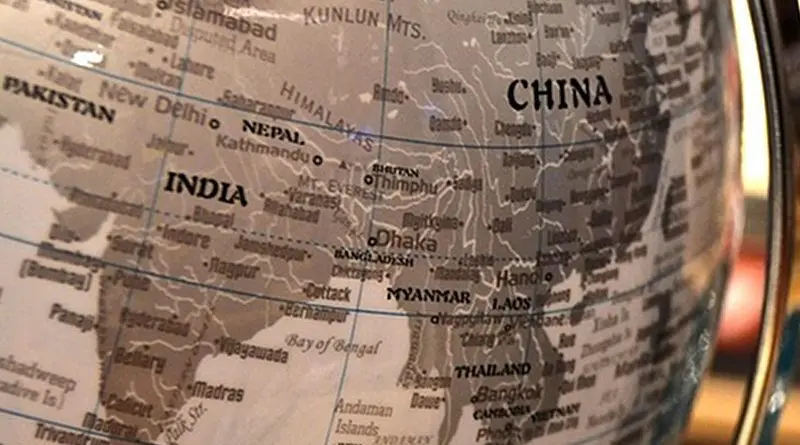Nuclear Lexicons And Learning In South Asia – OpEd
With two rival nuclear-armed states’ presence in close proximity, South Asia remains a center stage for the arms race. The undefined nuclear orientation is a focal point of major powers’ strategic debate about whether they are complying with international norms, when it comes to possessing nuclear capability. Besides acquiring nuclear capability, Pakistan and India remain blurred over the nuclear lexicons associated with acquired and indigenous capabilities.
Similarly, there is a serious concern about the understanding of nuclear language and learning in the nuclear field, which is frequently misunderstood and overstated in the South Asian region, which has the potential to mislead the masses in general and state relations in particular. For the same reason, there is an utter need for nuclear lexicons to be understood conceptually by state officials and assimilated by professionals in a purposeful manner for laymen to understand. Ostensibly, nuclear security regimes were crafted to instill some sense into state policies regarding the use of nuclear related jargon. Furthermore, there is an utter need to understand the basic nuclear terminologies that are being used slackly.
For instance, Nuclear signaling is an instrument that is employed when nuclear armed states communicate in times of war and crisis. There are two fundamental commitments that aid signaling: words and deeds. Messages are conveyed by foreign officials and public figures through public statements and speeches that hold importance for extraneous, who tend to quote such public statements. This in turn makes the environment deteriorate even further, putting the nuclear arsenal in question.
Despite having matured nuclear arsenals, both Pakistan and India do not have any sort of signaling channels during a crisis situation. In the case of the Balakot incident, tiny mistakes could have led to breaching the nuclear threshold. However, sensible decision making from military and political leadership averted it and would likely be the case in future too. The major powers in the cold war came up with the idea of signaling where in any conflicting situation, signals were communicated to avert any miscalculation.
Besides, there exists no commitment between the nuclear-armed countries (Indo-Pak) to do so because of their historical anomalies. Nuclear signalling can benefit both tenacious and common grounds in Indo-Pak relations. First, it will provide the countries with an outlook of mutual agreed terms, irrespective of their enmity. Second, it will lead the countries to avert nuclear armed conflict in the future.
The escalation ladder is a term that signifies the intensity of conflict defined by the nuclear enthusiast Herman Kahn. The ladder during the outbreak of any war or conflict between the two nuclear armed states will not follow the pattern described by Kahn. In fact, there is a possibility that the calculated outcomes could backfire and the war may intensify severely. Similarly, in Pakistan’s and India’s case, when the war erupts, the escalation ladder pattern would not be applicable. Once tactical superiority reaches its limit, then there will be a nuclear war. However, no one can tell with certainty that such an outbreak is feasible as it looks on paper.
During the cold war, the confronting states (US and USSR) remained in utter despair irrespective of having the nuclear capability and the means to destroy each other. Similarly, in the Cuban Missile and U2 crises, both powers were on the verge of nuclear war, but war was averted by prudent leadership. The main element to take note of here was that the US possessed a defense readiness mechanism to perceive any possible attack in advance. The system is known to be the defense condition system (DEFCON). The defense mechanism has roots dating back to the Cold War. The lower the number, the higher the worry. DEFCON 5 means peacetime and DEFCON 1 means imminent war.
Having said that, there is no such defence mechanism between Pakistan and India, and with nuclear weapons in the blend, there is a chance that during a crisis, a conventional war will directly go up the ladder, as Kahn described. Furthermore, the readiness systems both South Asian countries possess, their distrust in sharing intel and reciprocity during any crisis is ambiguous and does not seem to be converging on any common understanding paradigm.
The learning process, as answered by Jeffery Knoff and others, is outlined in two categories. Factual learning consists of empirical facts associated with nuclear weapons, and inferential learning (the lessons learned and applied to policy decisions). However, the process of learning is not suitable in the south Asian region due to various contingencies. Both countries are committed to maintaining their nuclear posture, including tactical nuclear weapons concealed behind camouflage.
When scientists observed the deleterious consequences of nuclear weapons used when they were first used in Japan at the close of WWII, they came up with a proposal for the non-use of these weapons for military purposes, but such technology can be used for peaceful and research purposes. Therefore, many more things can be said about nuclear related jargon and lexicons. Their use in the mainstream without any background knowledge or conceptual understanding creates uncertainty and confusion. Adversaries like Pakistan and India, who lacked communication altogether in previous years, despite the hotline between the India and Pakistan with no active engagement, both countries must focus on counter-building measures to come up with staunch policies. For example, the communication time in terms of the crisis in the region (between Pakistan and India) is less than five minutes. The engagement of major powers to mediate is unlikely to happen in such a short period of time. In the meantime, the adversaries may go all nuclear by accident.
*Sikandar Azam Khan is a Research Officer at Balochistan Think Tank Network (BTTN).

